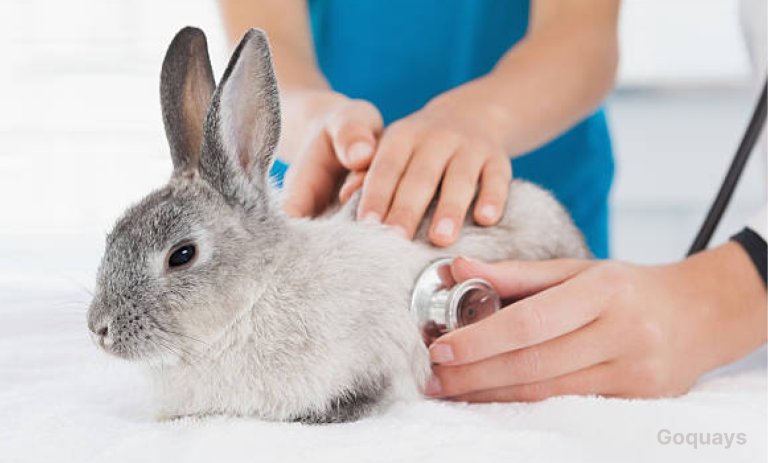If there’s one thing that you should know as a rabbit owner, it is the fact that hay is a vital part of the rabbit diet. Hay is the most essential component of your rabbit’s diet, regardless of whether they are a high-energy hopper or a relaxed lounger. However, how much is sufficient? What type of hay is appropriate, especially with the many varieties available in pet stores?
In this feeding guide, we will let you know the different components that make up a healthy bunny diet and the proportions that you should feed your rabbit. We will also help you understand the nutritional needs of your rabbit and how to prepare a balanced diet to keep your furry friend happy and healthy.
Rabbits make cute, adorable companions, but underneath all that cuteness is a very sensitive digestive system that requires a special diet rich in hay to prevent health problems. Before you decide on getting a pet rabbit, it is important to research on how to care for them, especially the kind of diet they need to thrive. Rabbits need fresh hay and grass, some leafy greens and a small amount of pellets. Continue reading to find out more about what a healthy rabbit diet should contain.
Why is Hay Crucial for Rabbits?
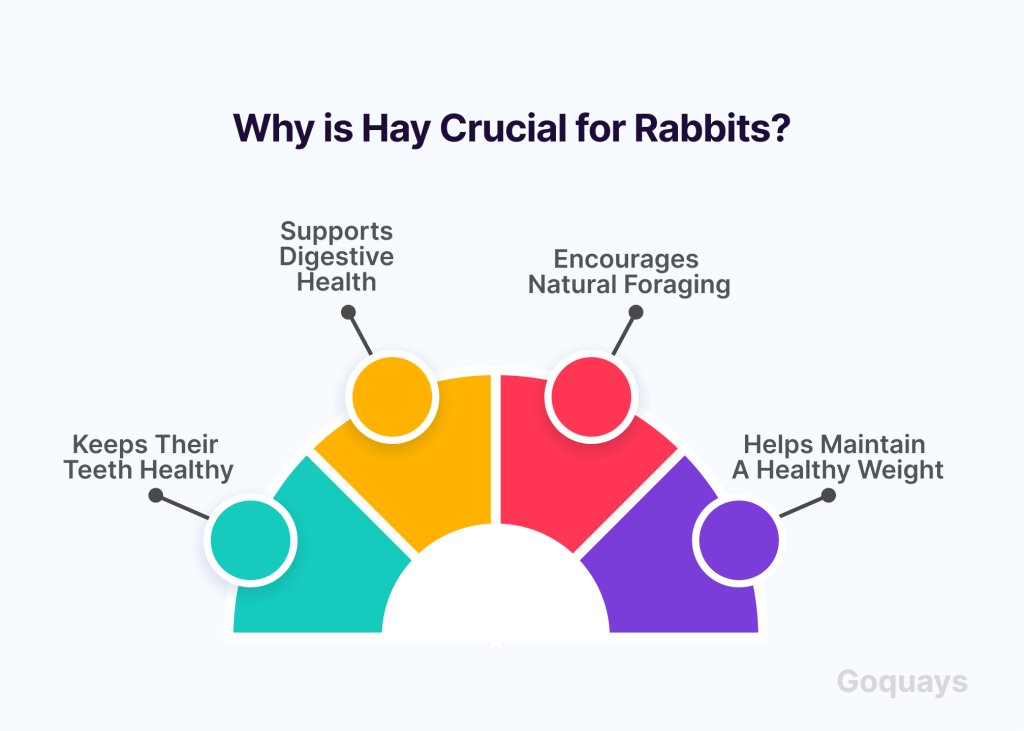
The digestive system of a rabbit is built to continuously process fibrous foods, and hay is the ideal source of fibre to keep things running smoothly. Hay is more than just a snack; it is an essential component of your rabbit’s health and wellbeing. You should never run out of fresh hay, think of it as your bunny’s equivalent of a well-stocked fridge. Reasons why hay is important for your rabbit include:
Keeps Teeth Healthy
A rabbit’s teeth never stop growing, so constant chewing is vital. Hay’s coarse texture naturally wears teeth down, preventing painful overgrowth, abscesses, and serious health issues. Regular hay chewing is the best way to avoid costly dental problems.
Supports Digestion
Rabbits have sensitive digestive systems designed for high-fibre foods. Hay acts like a broom, keeping food moving smoothly through the intestines and preventing gastrointestinal stasis (GI stasis)—a dangerous condition where the gut slows or stops. Rabbits that don’t eat enough hay are far more likely to suffer from this potentially fatal problem.
Encourages Natural Foraging
In the wild, rabbits spend much of their day grazing. Providing unlimited hay allows domestic rabbits to mimic this instinctive behaviour. This not only keeps them busy and mentally engaged but also reduces boredom, stress, and destructive chewing around the home.
Helps Maintain a Healthy Weight
Obesity in rabbits is difficult to reverse and can lead to serious complications. Hay is naturally low in calories yet packed with the right balance of nutrients, including fibre, calcium, and protein. Unlike sugary fruits or fatty treats, hay supports a healthy weight and overall wellbeing.
The Bottom Line
Unlimited hay is the single most important part of your rabbit’s diet. It protects their teeth, supports digestion, encourages natural behaviours, and helps maintain a healthy weight—keeping your bunny both happy and healthy.
What Should a Healthy Rabbit Diet Contain
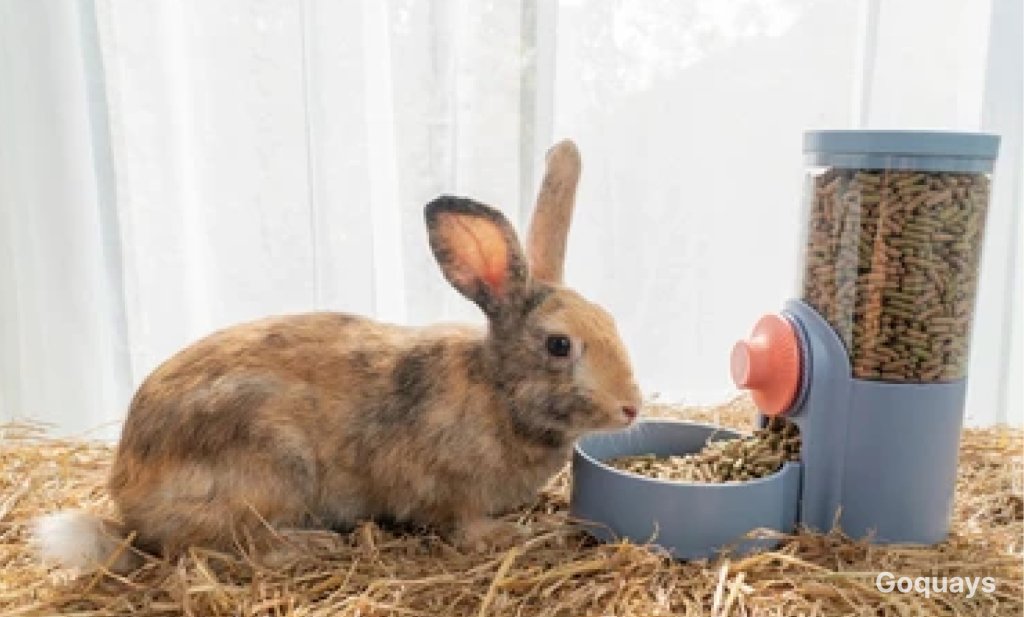
A Balanced Rabbit Diet: What Your Bunny Needs
Hay is the foundation of a rabbit’s diet, but it isn’t the only requirement for good health. According to the Rabbit Welfare Association and Fund (RWAF), an ideal diet should consist of about 85% hay, 10% leafy greens, and 5% pellets. This balance supports dental health, digestion, and overall wellbeing.
Hay (80–90%)
Your rabbit’s diet should be hay-based, with fresh supplies available at all times. Timothy hay is best for adults, while alfalfa, richer in protein and calcium, suits young rabbits and nursing mothers. Replace hay daily to keep it fresh.
Leafy Greens (10%)
Leafy greens provide moisture and essential nutrients. Offer about 1–2 cups per 2 kg of body weight daily. Safe options include romaine lettuce, coriander, celery, carrot tops, kale, spinach (in moderation), broccoli, bell peppers, and herbs like parsley, mint, basil, and dill. Always check with your vet if unsure, as some vegetables can be harmful.
Pellets (5% or Less)
Pellets should supplement, not replace hay. Choose plain, timothy-based pellets free from seeds or coloured pieces. An adult rabbit only needs about ¼ cup per 2 kg of body weight.
Fresh Water
Rabbits need constant access to clean drinking water in a sipper bottle or heavy ceramic bowl. Refill at least twice daily and clean bottles or bowls regularly.
Occasional Treats
Keep sugary treats minimal to avoid weight gain. Small pieces of apple (seedless), banana, berries, or carrot are fine a few times a week and can be useful for training rewards.
Variety Matters
Rabbits enjoy variety. Rotate greens and mix in different types of hay like oat or orchard grass to keep meals interesting. Avoid muesli-style foods, which can upset digestion and cause obesity.
How to Safely Switch Your Rabbit’s Diet
If you want to switch your bunny’s diet to a much healthier one, you should note that any nutritional changes must be made gradually to prevent stomach upsets and digestive issues because of their sensitive digestive systems. Introduce new hay gradually over a period of 7-10 days, mixing with an existing hay that they are already used to and gradually increase the portion daily.
This also applies if you are introducing new greens, always start with one type at a time and observe your bunny closely for signs of abdominal discomfort or change in droppings.
Why you Should Avoid Sudden Changes
The digestive system of rabbits relies on a delicate balance of intestinal bacteria to properly digest food. This balance can be disrupted by sudden changes in diet which can result in diarrhea, loss of appetite and sluggishness. If not properly handled, it can also lead to GI stasis which is more fatal. However, with a little patience, you can safely introduce new foods to your rabbit while ensuring its health and happiness.
Steps for Switching your Rabbit’s Diet
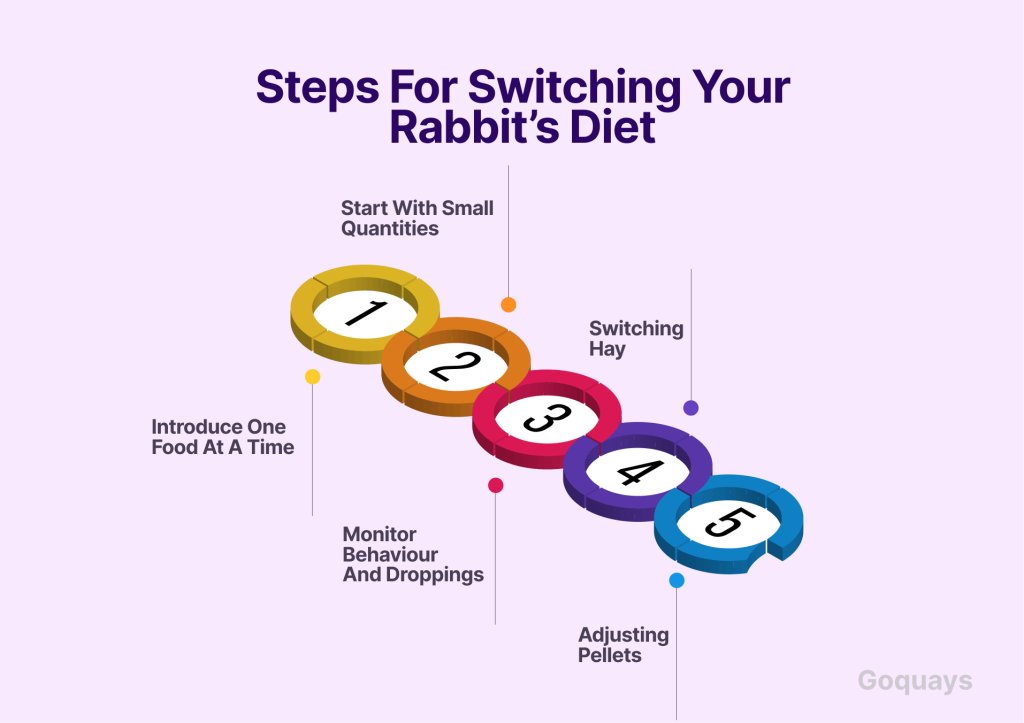
Introduce one food at a time: Keep the rest of their diet the same and start with just one new item, like a leafy green or a different kind of hay.
Start with Small Quantities: Give your rabbit a tiny amount of the new food and watch how it responds. If they continue to have regular bowel movements and show no symptoms of pain, gradually increase the portion each day.
Monitor Behaviour and Droppings: Round, dry, and uniform is the hallmark of healthy rabbit waste. A warning sign is loose or mushy droppings. Additionally, keep an eye out for symptoms like; sluggish movement, hunched posture, and refusal to eat. If you notice any of these or changes in behavior, revert to their regular diet and consult your vet.
Switching Hay: Mix the new hay in with their current hay in increasing quantities over the course of a week. In this manner, your bunny can gradually become accustomed to the flavour, texture, and scent.
Adjusting Pellets: When switching pellet brands or moving an adult rabbit from alfalfa-based to timothy-based pellets for example, gradually add more of the new pellets each day over a period of 10 to 14 days.
Do not give treats to your bunny when making changes to their diet. When sugary treats are introduced during a transition, it may be more difficult to determine whether the new item is responsible for any health challenge that may occur. Stick to core foods until the switch is complete.
Tips for Encouraging Hay Consumption
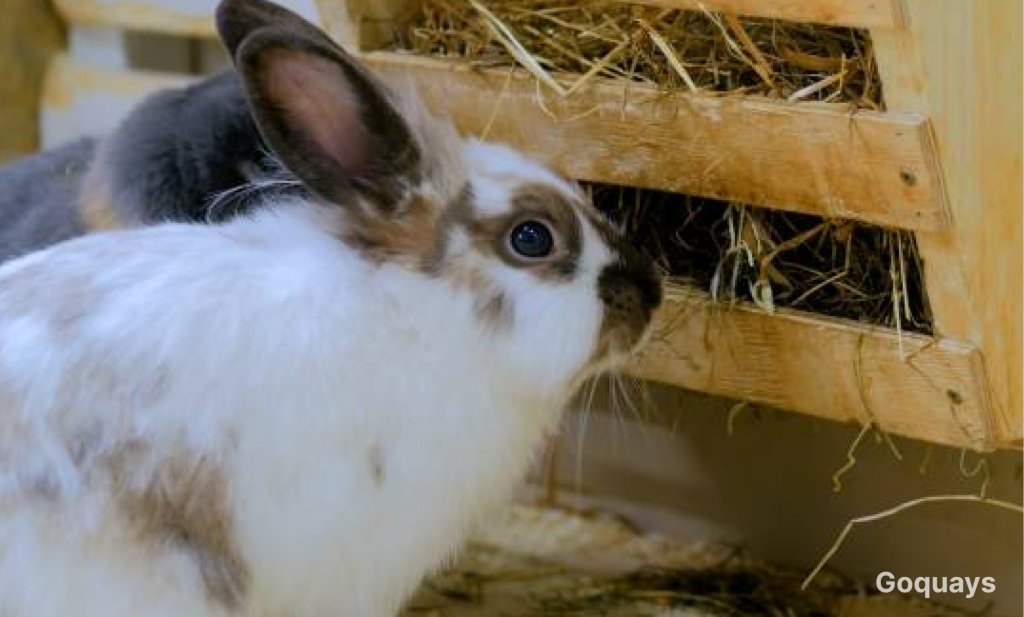
Hay is essential to your rabbit’s health, but not all bunnies eat it willingly. If your rabbit isn’t a hay fan, don’t worry—there are several ways to make it more appealing.
Offer a Variety
Rabbits have preferences, so try different hays in small amounts. Timothy hay is ideal for adults, orchard grass is soft and sweet-smelling, meadow hay mimics natural forage, and oat hay is crunchy and great for chewing. Mixing types can also keep things interesting.
Keep It Fresh
Rabbits are picky about freshness. Replace uneaten hay daily, store it in a cool, dry place (not plastic), and avoid packing it tightly. Fresh, fluffy hay is far more enticing.
Make Foraging Fun
Turn hay into an activity by stuffing it into cardboard tubes, boxes, or hay balls. Hide small treats inside to spark natural foraging instincts and encourage longer munching sessions.
Add Herbs or Greens
Sprinkling rabbit-safe herbs like mint, parsley, or basil can tempt picky eaters. The aroma and taste may encourage nibbling and increase hay intake.
Place Hay Strategically
Put hay where your rabbit spends the most time—near their bed, play areas, or over their litter box. Rabbits love to snack while relaxing or even while using the potty, making hay consumption feel natural.
Limit Pellets
Overfeeding pellets can reduce hay interest. Keep pellets to no more than 5% of their diet so hay remains the primary food source. Otherwise, your rabbit may ignore hay for tastier options.
By experimenting with variety, freshness, and placement, you can help your rabbit develop a healthy love for hay—supporting both digestion and dental health.
Signs your Rabbit is Healthy and Eating right
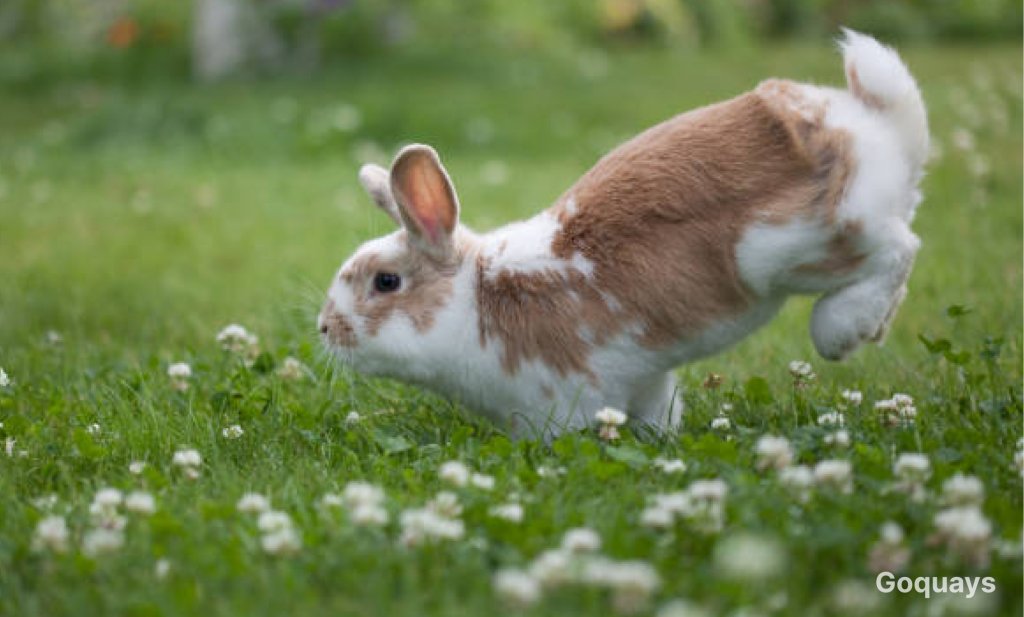
A healthy bunny is a happy bunny, and the best way to know if your rabbit is thriving is by observing their behaviour, appearance, and droppings. Because rabbits often hide illness, spotting early signs is crucial.
Droppings
Your rabbit’s droppings reveal a lot about their health. Normal droppings are round, dry, and consistent in size. Small, soft, or oddly shaped droppings may signal digestive problems or too little hay in their diet.
Appetite for Hay
A healthy rabbit should eat hay throughout the day. Grazing keeps the digestive system moving and helps wear down constantly growing teeth. A bunny that eagerly dives into hay is on the right track.
Energy and Curiosity
Well-fed rabbits are typically alert and adventurous. They hop, leap, and explore their surroundings with curiosity, showing interest in people, toys, and treats.
Teeth and Chewing
Rabbits’ teeth never stop growing, so chewing hay and safe toys is essential. Without this, teeth may overgrow and cause pain. Regular vet checks and hay access help prevent problems.
Fur, Eyes, and Grooming
Bright eyes, a clean nose, and shiny fur indicate good health. Rabbits also groom themselves often. Dandruff, bald spots, or crusty eyes may point to dietary deficiencies or illness.
Hydration
Healthy rabbits drink regularly and produce light-coloured urine. Litter-trained bunnies should urinate and poop consistently in their designated spot.
When to Worry
Contact your vet immediately if your rabbit refuses food or water, produces very few droppings, seems lethargic, hides, grinds their teeth, or has a bloated belly.
Staying alert to these signs will help ensure your rabbit remains happy, comfortable, and healthy.
Tips for Keeping Your Rabbit Healthy
- Provide unlimited fresh hay
- Feed your bunny a well-balanced diet
- Ensure there is clean fresh water
- Give them space to exercise
- Encourage mental stimulation by imitating their natural habitat
- Schedule regular vet check-ups
- Maintain good hygiene
- Groom regularly
A Happy Bunny Starts with a Healthy Diet
When it comes to a healthy rabbit diet, hay is actually the centre of everything. It keeps their digestion going, their teeth in order, and their little bunny hearts content. Making hay a major component of their daily diet is one of the best decisions you can make, regardless of your level of experience with bunnies.
Not only are you providing your rabbit with food, but you’re also laying the foundation for a longer, healthier life by knowing what a good rabbit diet looks like, making adjustments gradually, and coming up with inventive ways to keep hay interesting and fresh.



